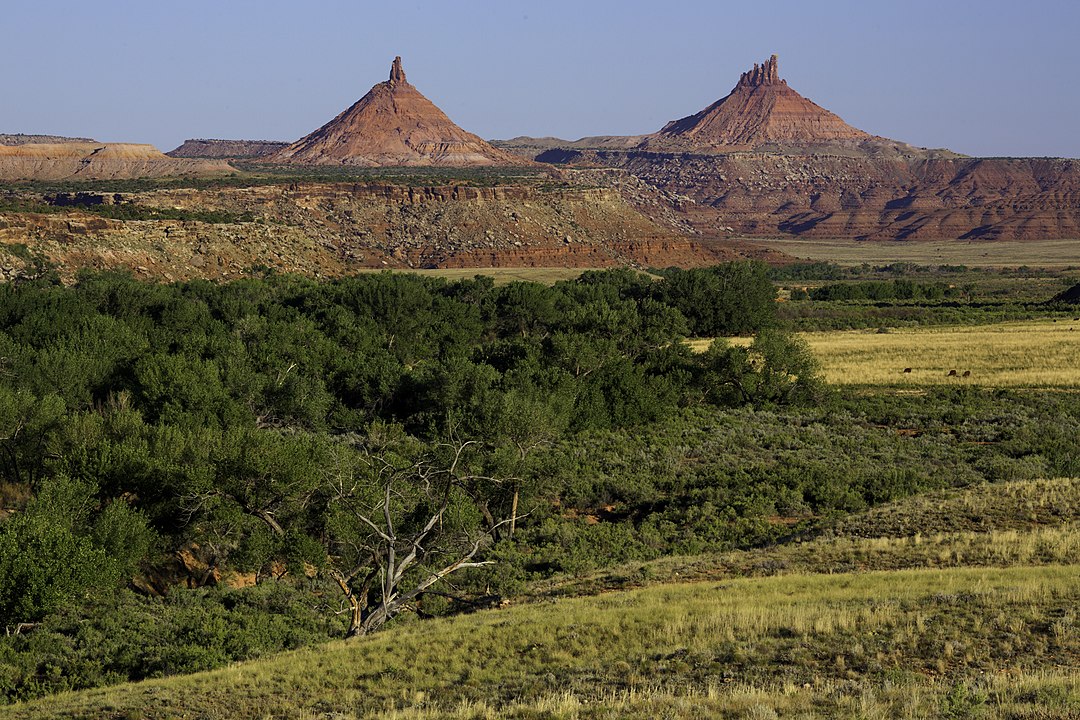
- Details
- By Native News Online Staff
The Bureau of Land Management and U.S. Department of Agriculture Forest Service are seeking public input on a draft plan to guide management of the Bears Ears National Monument, incorporating considerable input from the Bears Ears Commission, the State of Utah, other cooperating agencies, and the public. The agencies are committed to ensuring that existing uses of cattle grazing, recreation and traditional gathering of firewood and plants continues as part of the monument’s management.
The proposed plan includes five alternatives for public comment. The Bears Ears Commission--comprising the Hopi Tribe, Navajo Nation, Ute Mountain Ute Tribe, Ute Indian Tribe of the Uintah and Ouray Reservation, and the Pueblo of Zuni—provided input during the development of the draft plan consistent with the vision of President Biden’s restoration of the national monument and the central role Tribal Nations have had in stewarding these ancestral homelands.
When final, the comprehensive management plan will replace the existing 2020 Record of Decision and Approved Monument Management Plans for Bears Ears National Monument and portions of the 1986 Manti-La Sal National Forest Land and Resource Management Plan, as amended, and portions of the BLM Monticello and Moab Resource Management Plans that together guide the management of the approximately 1.36 million acres of federal lands within the Bears Ears National Monument.
“The publication of the Draft Resource Management Plan and associated Environmental Impact Statement begins the next step in the Bears Ears National Monument planning process,” BLM Utah State Director Greg Sheehan said. “I greatly appreciate the extensive knowledge provided by the Commission and the State, and welcome substantive public input as the vital next step in considering the alternatives in the draft.”
“While the draft management plan offers five different alternatives, public feedback will help us to refine the final plan,” Acting Manti-LaSal Forest Supervisor Barbara Van Alstine said. “It’s through these public comments we are able to find the best course forward.”
The BLM and USDA Forest Service intend to hold seven open-house style public meetings with opportunities to speak with resource specialists, including two virtual meetings. Logistics of those meetings will be on the BLM National NEPA Register at least 15 days in advance.
This initiates a 90-day public comment period on the Draft Resource Management Plan, Environmental Impact Statement, related proposed recreational shooting closures, and proposed Areas of Critical Environmental Concern.
Interested parties may submit comments through the “Participate Now” function on the BLM National NEPA Register or mail input to ATTN: Monument Planning, BLM Monticello Field Office, 365 North Main, Monticello, UT 84535.
More Stories Like This
Native News Weekly (August 25, 2024): D.C. BriefsUS Presidents in Their Own Words Concerning American Indians
Deb Haaland Tours CNM Workforce Facilities, Highlights Trade Job Opportunities
Federal Court Dismisses Challenge to NY Indigenous Mascot Ban
Sen. Angus King Warns of ‘Whitewashing’ History in National Parks Under Trump Administration
Help us defend tribal sovereignty.
At Native News Online, our mission is rooted in telling the stories that strengthen sovereignty and uplift Indigenous voices — not just at year’s end, but every single day.
Because of your generosity last year, we were able to keep our reporters on the ground in tribal communities, at national gatherings and in the halls of Congress — covering the issues that matter most to Indian Country: sovereignty, culture, education, health and economic opportunity.
That support sustained us through a tough year in 2025. Now, as we look to the year ahead, we need your help right now to ensure warrior journalism remains strong — reporting that defends tribal sovereignty, amplifies Native truth, and holds power accountable.
 The stakes couldn't be higher. Your support keeps Native voices heard, Native stories told and Native sovereignty defended.
The stakes couldn't be higher. Your support keeps Native voices heard, Native stories told and Native sovereignty defended.
Stand with Warrior Journalism today.
Levi Rickert (Potawatomi), Editor & Publisher


